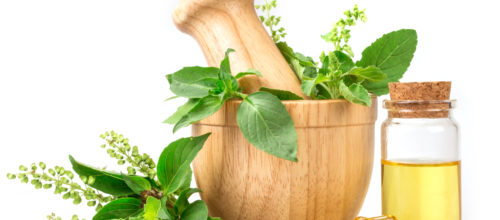
Herbal Medicine in a Nutshell
For thousands of years people have been utilizing plants for their therapeutic properties. There are several herbal medicine systems and approaches used throughout the world. In the U. S. most herbal medicine practitioners have some formal training. In New York, many licensed Acupuncturists are also formally trained herbalists and the practice of herbal medicine is within their professional scope of practice. Traditional Chinese herbal Medicine (TCM) is the most common system of herbology used today, followed by the European/Western systems (WHM), and Ayurveda (from India).
TCM is arguably the oldest form of herbal medicine. It involves the use of over 300 plants and other natural materials in their raw form, or slightly processed in formulas comprised of several herbs, which mutually enhance each other. These formulas are designed based on the person’s unique physiology as well as the symptoms or disease they suffer from. This is done in response to the many variations of the same diseases that are seen in real life scenarios. In contrast, the WHM system usually entails the use of a single herb that has been moderately to highly processed, and prescribed with more focus on the particular illness than the person as a whole. Both have their merit and place depending on the given situation, and we tend to utilize a combination in daily practice.
WHM has a history of traditional unprocessed herb usage, but today it is more of a scientific approach, which focuses on measuring and isolating specific chemical compounds within a plant to be extracted and packaged. One example is the well-known herb St. John’s Wort (SJW). This herb was found to contain a chemical called hypericin, which has since been standardized to contain a specific amount of that chemical based on lab results. Hypericin’s chemical effect is antidepressant in nature. So much so that it is not to be used by a person who is on a prescribed SSRI (anti-depressant) medication since it has the potential to interfere with the pharmaceutical effects of the drugs. If a person were to consume an SSRI and SJW they are essentially doubling their dosage which could lead to serious complications. SJW is so well studied and controlled that it can potentially be used in lieu of an SSRI.
TCM, on the contrary, was developed in a time without any way of measuring the chemical compounds within a plant. Instead, herbs were experimented on, and with, by practitioners and patients over hundreds of years. They were categorized based on the effects, which were found to be correlated to the flavor/taste, and observable effects of the herbs. In recent decades there has been much more research into what makes the herbal formulas in TCM work.
When considering an herbal approach to dealing with any illness we should always speak with a professional. Herbs, like pharmaceuticals, can be therapeutic or harmful depending on how they are sourced, and used. TCM and WHM are the two systems which our providers at IAMT are trained to practice. Please contact us to discuss options for your specific needs. We can help guide you to safe and effective products based on the best evidence available.
